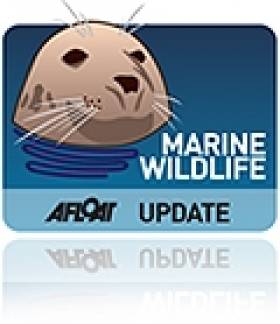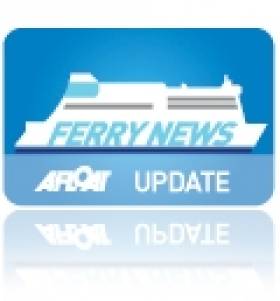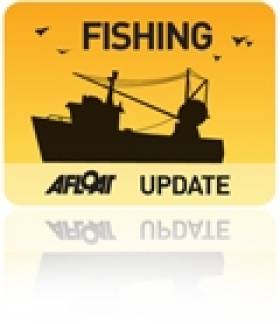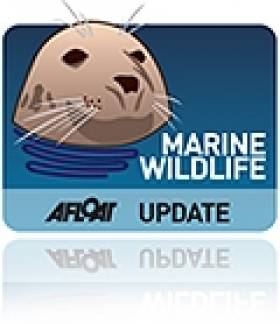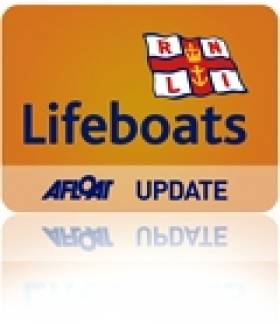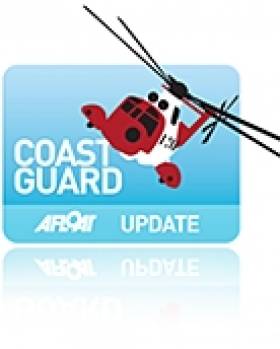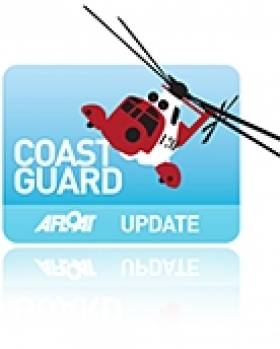Displaying items by tag: Isle of Man
Cardigan Bay's Dolphins Take Winter Breaks in the Isle of Man
#MARINE WILDLIFE - The famous dolphins of Cardigan Bay have been found to cross the Irish Sea to spend their winter holidays in the Isle of Man, WalesOnline reports.
New evidence uncovered by researchers at the Cardigan Bay Marine Wildlife Centre (CBMWC) confirms that dolphins from the New Quay area on the Welsh coastline have been photographed over the winter hundreds of miles north by conservationists in Douglas.
As many as eight vacationing cetaceans have been identified by matching markings on their dorsal fins, with one being a regular visitor since 2005.
“We’re really excited about this because it confirms how far the Cardigan Bay dolphins roam in the winter months when we see fewer of them at New Quay – knowledge we need to have if we’re to protect them successfully," said CBMWC science officer Sarah Perry.
Cardigan Bay is home to Europe’s largest population of bottlenose dolphins and is one of the last remaining places in the UK where the species thrives.
WalesOnline has more on the story HERE.
Plans for Wind-Farms Won’t Affect Manx Ferry Operator
#MANX FERRY – The IOM Today reports that the Manx Government is drawing up plans to ensure that any wind-farms built within the waters off the island would not affect ferry routes.
Work on the Isle of Man Marine Plan is under way and the Department of Environment, Food and Agriculture's director of environment Martin Hall said it was important it was completed in a 'timely manner'.
One of the plan's objectives would be to identify current activities in Manx waters and safeguard their ongoing use. Mapping the location of navigation corridors, important natural areas and pipelines/cables will enable the island to identify potential wind farm sites that will not adversely affect current uses of the Manx marine environment, including ferry routes and fishing.
The comments come following criticism from the Isle of Man Steam Packet Company over Centrica's plans for a wind farm in the Irish Sea, outside Manx waters. The Steam Packet says that Centrica plans to develop in the path of two routes: Douglas-Liverpool and Douglas-Heysham, in spite of complaints from the ferry operator. For much more on this story click HERE.
Pioneering Programme for Isle of Man Scallop Fishery
#FISHING - Conservationists and the fishing industry have joined forces in a new venture to evaulate the state of the Isle of Man's scallop fishery, as the Guardian reports.
Both sides will co-manage the 35-square-mile Ramsey marine nature reserve in the Irish Sea, collecting data to show what progress the scallops have made since fishing in the area was banned in 2009.
It is hoped that the study will lead to a renewing of leases for scallop fishing, which is worth up to £12 million annually to the Isle of Man's economy - though industry leaders have doubts that the new arrangement will serve the island's fishermen.
Some 2.6% of Manx waters are protected, with more than 1% 'highly protected', which is in stark contrast to the rest of the United Kingdom after plans for a national network of conservation zones were shelved till at least next year.
The Guardian has much more on the story HERE.
Irish Sea Far From 'Dirty, Lifeless' Says New Website
#MARINE WILDLIFE - The UK's Wildlife Trusts have launched a new website in an effort to redress the idea that the Irish Sea is "a dirty, lifeless" place.
As BBC News reports, the trusts' Cheryl Nicholson put down the Irish Sea's poor image, saying "nothing could be further from the truth".
"Our sea is home to so many amazing species and habitats," she added, "but sadly, after centuries of neglect, it is not in a good state. We must act now to protect the Irish Sea from the depths through to the coastal shallows."
The new website is part of a campaign by wildlife trusts throughout northwest England, Wales, Northern Ireland and the Isle of Man to establish 15 Marine Conservation Zones recommended for the area.
The zones, if officially designated, would provide "a haven for wildlife to recover and thrive", said Nicholson.
As previously reported on Afloat.ie, plans to establish such zones in the Irish Sea have been shelved till 2013 at the earliest after pressure from fishermen, boaters and other groups.
BBC News has more on the story HERE.
Awards for RNLI Volunteers on Isle of Man
#RNLI - Peel Lifeboat Station is three times proud as a trio of its volunteers will receive awards for their services to the RNLI.
IsleOfMan.com reports that the badge winners were announced at the RNLI headquarters in Poole as part of its 2012 awards list.
Bronze badges will go to Francis Watterson and press officer and past chairman Malcolm Kelly, while Adrienne Teare was awarded a gold badge.
All three will be presented with their badges at a function later this year.
RNLI Peel is one of five lifeboat stations on the Isle of Man servicing much of the Irish Sea between northern England, Scotland and Ireland.
Welsh Kayaker Sets New Irish Sea Crossing Record
According to Canoe & Kayak, last Saturday 2 October Anglesey man John Willacy crossed from Soldier's Point in Holyhead to Howth in Dublin - a distance of 55.8 nautical miles - in 11 hours 19 minutes and 59 seconds.
It's not the first open sea kayaking record set by Willacy, who last year broke the record for circumnavigation of the Isle of Man in 12 hours 38 minutes.
Irish Sea Sailor Makes Call for Help
It transpired that the caller was a sailor onboard his catamaran with his wife south of the Isle of Man who had taken some water on the vessel and believed that he was sinking.
Liverpool Coastguard working with the coastguards at the marine operations centre, Douglas on the Isle of Man requested the launch of the Port St Mary and Port Erin RNLI lifeboats to locate the vessel and render assistance.
The lifeboats located the vessel and pumped water from one of the hulls and towed it into port.
Paul Parkes, Watch Manager, Liverpool Coastguard said:
We recommend that you have adequate training in the use of VHF radio equipment, to ensure that when you have a situation that causes you concern, you make the appropriate call to secure the best possible response.
It is recommended that you fit VHF DSC radio equipment to your vessel which would enable the Coastguard to receive an accurate position of your vessel.
The near 700-passenger capacity ship operated by UK based Voyages of Discovery is scheduled to call at several Scotish ports before returning to Portsmouth via the North Sea.
Discovery has eight decks with facilities to include two swimming pools, one with a retractable roof, jacuzzis, lounges, bars, a library and gymnasium, lecture theatre, cinema, restaurants, an internet cafe, shop, beauty salon and a medical centre.
She was built in 1971 as the Island Venture, then renamed Island Princess after purchased by Princess Cruises, alongside her sister Pacific Princess which appeared in the popular US TV series sitcom the 'Love Boat' broadcast by ABC between 1977-1986.
In total there will be four cruise-calls during the season to Douglas but the next visit will be not until July when P&O Cruises Adonia calls on the 17th. The ten-year old 710 passenger vessel is due to be named by Dame Shirley Bassey at a ceremony held in Southampton later this month.
Also calling to Douglas will be Oceania Cruises brand new 60,000 tonnes / 1,250 passenger Marina on the 24th July and the final call is to be made by Noble Caledonia's Japanese built Clipper Odyssey in mid-August.
- Killybegs
- Cork
- Discovery
- Marina
- Ringaskiddy
- Cruise Liners
- Princess Cruises
- southampton
- Isle of Man
- P&O Cruises
- Ports and Shipping News
- Manx
- Voyages of Discovery
- Douglas
- Douglas Bay
- Adonia
- Dame Shirley Bassey
- The 'Love Boat'
- ABC
- Pacific Princess
- Island Princess
- Oceania Cruises
- Cruise Liner news
- Clipper Oydessey
- Noble Caledonia
Former US Navy Fast-Craft Re-opens Seasonal Dublin Route
Manannan's chequered career included a five year charter initially to the United States Navy but transferred to the United States Army Forces between 2001-2006. The 5,029grt craft (see photo) was used for various trials and demonstrations and in which saw service in the Persian Gulf in support of 'Operation Iraqi Freedom' and in 2003 'Operation Enduring Freedom' in the Horn of Africa.
An engine plant of 4 x Caterpillars diesel generates a speed of over 40 knots / 46 mph which provided logistical solutions by the High-Speed Vessel (HSV) to transport troops and supplies covering long distances in support of the Combined Joint Task Force.
Other tasks required by the force included the roles of operating as a mobile command centre which entailed working closely inshore and operating as a helicopter carrier. Helicopters landed at the craft's stern positioned helicopter landing deck.
The military role of the craft is in stark contrast compared to when the 96m ferry was launched in 1998 for civilian purposes as the Incat 050, the number representing the number of pioneering wave-piercing craft built by InCat in Hobart, Tasmania.
Asides her military days the 800-passenger / 200 vehicle fast-ferry has served the Hobart-Melbourne route, between New Zealand's north and south island and in European waters in the Mediterrean and to the Canary Islands.
Manannan (see photo) entered service last May after the Isle of Man Steam Packet Company (IOMSPco) purchased the vessel which was laid-up in Hobart. She made the long delivery to the northern hemisphere and was re-converted for ferry usesage during a refit in Portsmouth.
The 181 year-old company is the only sea-based passenger operator to the island on services linking Dublin, Belfast, Heysham, Liverpool and (Birkenhead) in the winter months.
There are rival companies such as the Ramsey Steamship Company but they are freight-only operators mostly running to Belfast and Liverpool using short-sea coastal traders and to other small Irish Sea ports.
An annual round island cruise is held and like last year the Manannan will be serving the cruise on Sunday 1 May departing Douglas at 11am for a journey of around 2 hours. The route closely circumnavigates the spectacular Manx coastline. For information on the island cruise and fares click here.
Two Crew Rescued from Sinking Boat
Liverpool Coastguard received the mayday from the 'Aurora' at 16.47, and requested the launch of the Port St. Mary RNLI Inshore and All Weather Lifeboats, along with tasking the Port Erin Coastguard Rescue Team. Another fishing vessel, 'Two Girls' overheard the mayday and proceeded to the vessel, taking the two crew members on board. Although crew members from the lifeboats attempted to pump the water from the vessel, the ingress was too much and at 17.07 the vessel sank. The crew members from the Aurora were taken back to Port St. Mary, where they were met by the Coastguard Rescue Team.
Liverpool Coastguard Watch Manager Su Daintith said:
"We would like to thank the crew of the vessel 'Two Girls' whose swift response to the Aurora's mayday this afternoon ultimately saved both of the crew members' lives."



























